
Subsea Infrastructure Power Looks at Renewables
simple terms, it’s the bridge between intermittent renewable energy production and power users that need reliable, stable power, says Slorach, whether that’s low power over long periods, short duration high power use, or fast-charging of subsea vehicles. In-built into the system is wireless communications for applications where an umbilical has failed or for communicating with subsea vehicles.Renewables for Subsea Power projectTwo demos are currently imminent. In December, one of its Halo units will be deployed offshore Orkney, Scotland, alongside a wave energy converter (WEC), subsea controls
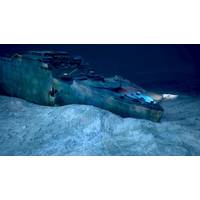
Inmarsat's Satellite Services for OceanGate Expeditions' 2022 Titanic Survey Expedition
Convention for Safety of Life at Sea (SOLAS) was adopted. Over the years the SOLAS Convention evolved as maritime technologies evolved. Inmarsat (originally International Mobile Satellite Organization) was established in 1979 by the International Maritime Organization (IMO) to provide modern wireless communications to maritime vessels and served as a crucial advancement in maritime safety.In 1992 the IMO, the United Nations agency responsible for ship safety, began the phase-in of a new system called Global Maritime Distress and Safety System (GMDSS). Inmarsat became the first satellite operator
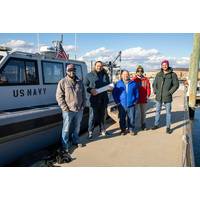
Bionet Sonar Tests Underwater Wireless Network at NUWC Division Newport
Newport recently assisted Massachusetts-based small business Bionet Sonar by underwater testing its new wireless technology called HydroNet at the Narragansett Bay Test Facility for two days in February.HydroNet is an open, modular and programmable underwater modem that powers an autonomous wireless communications system bringing the internet underwater and empowering the network with artificial intelligence-driven, software-defined technologies.Its plug-and-play capability with remotely operated vehicles (ROVs), autonomous underwater vehicles (AUVs), and unmanned undersea vehicles (UUVs) creates
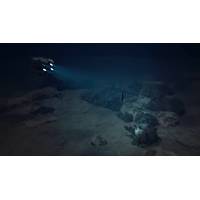
Sonardyne Launches Wireless Seabed UXO Disposal Capability
vessel, safely initiating a shock tube detonator. Recent demonstrations were conducted over distances in excess of 1,000 m away," Sonardyne said.IT 6 is based on Sonardyne’s Wideband 2 digital signal technology, which, the company says, offers a reliable and long-range underwater wireless communications link. "The development of IT 6 means that technicians no longer need to wire UXO neutralizers up to signal relay buoys on the surface and are not restricted to good weather and daylight for setting up an initiation operation," Sonardyne said.Sonardyne IT 6: IT 6 is used with
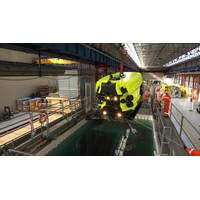
MTR100: Five "Ones to Watch"
them, and acoustic positioning from Trondheim based Water Linked. In future, the magnetic field of Blue Logic’s the inductive connector could also be used to guide the drone on to the SDS, says Eide.Blue Logic is in the Subsea Wireless Group (SWiG), which is working to standardise subsea wireless communications also.Saab Seaeye: Doing it for realSaab Seaeye’s Sabertooth during a demo with Equinor’s subsea docking station. Images: Saab Seaeye. Sweden’s Saab Seaeye has been one of those driving the vehicle side of the equation – for at least 10 years.The firm has some
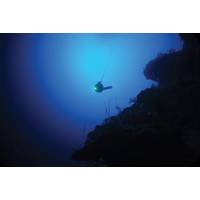
Unheard Underwater: Covert Communications
of this last great wilderness, the deep ocean. Their First Descent initiative involved a series of expeditions, using two manned submersibles, in the Indian Ocean to help explore and conserve one of our least protected spaces.A Saab Seaeye Sabertooth using BlueComm free space optical modem for wireless communications.Photo: SonardyneIn this mission, they set up a depressor (a cabled receiver from a surface vessel) with a BlueComm 200 UV on one submersible and, on other, a BlueComm 200 that was working with a prototype green light wavelength in order to keep sufficient separation in the wavelengths to

Sonardyne Hires Paull as Business Development Manager
to grow their energy and food production.“Increasingly our oceans are being looked at as engines of growth – be it in renewable energy, aquaculture, mineral resources and even biotechnology. Sonardyne’s growing portfolio of underwater acoustic positioning, inertial navigation, wireless communications and sonar technology systems are extremely well placed to serve and support these evolving, growing and important markets,” Paull said.Sonardyne’s systems are already established in the offshore renewables market, where its Ultra-Short Baseline (USBL) technologies are used in
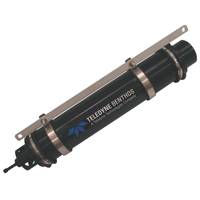
Teledyne Benthos Acoustic Modems Meet NATO’s New JANUS Interoperability Standard
(universities, industries and research institutions) covering a range of application scenarios.Ken Scussel, Acoustic Communications Engineering Manager, said, “Teledyne Benthos acoustic modems have been used extensively for many years for defense applications, particularly for underwater wireless communications requiring high reliability. We’re incredibly pleased that our collaborative effort to conform to the new JANUS standard has been successful, and we look forward to the potential applications that this new protocol will unlock to further advance the utilization of ACOMMS for critical

WFS, Seatronics Demonstrate Drone-to-ROV Wireless Communications
Subsea wireless automation provider WFS Technologies, and marine rental equipment specialist Seatronics Inc, an Acteon company, demonstrated Drone-to-ROV wireless communications at a Subsea Internet of Things event in Houston. The demonstration took place on the February 15th at Delta SubSea (DSS) test tank facility in Houston, Texas and was attended by representatives from Shell, ExxonMobil, Chevron and BP. Seatooth wireless controllers were integrated with a Seatronics Predator II Inspection Class ROV and a DJI Inspire drone. 2-way data communications between the ROV and the drone
 February 2025
February 2025





